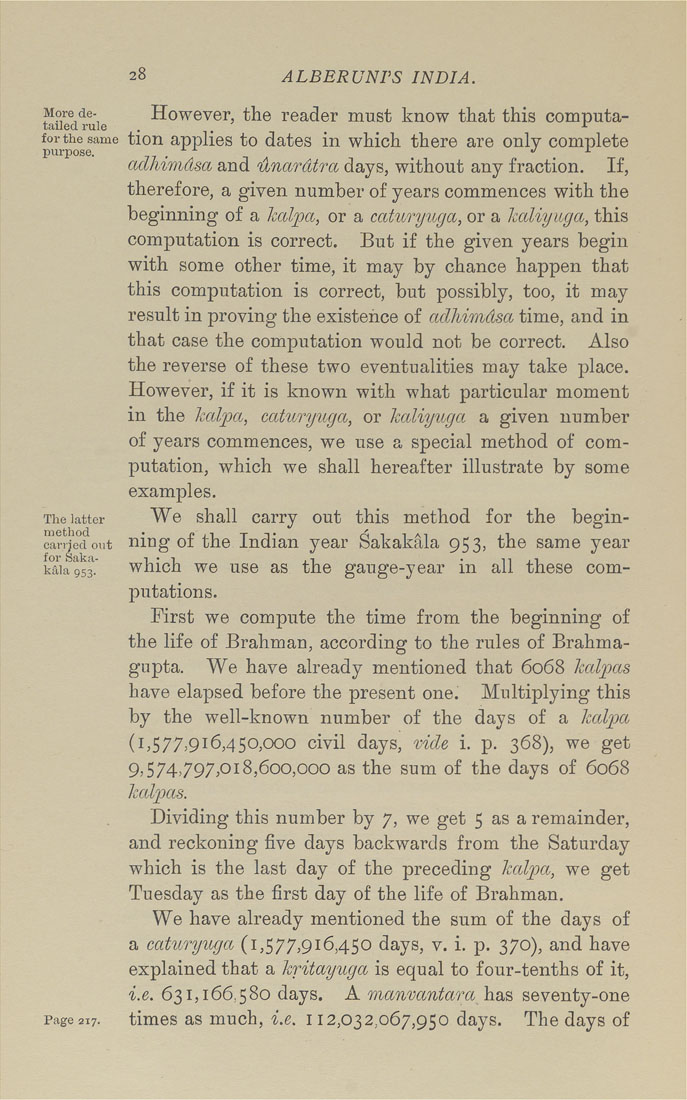28 ALBERUNTS INDIA.
More de- Howcver, the reader must know that this computa-
tailed rule . . ^
for the same tion applies to datcs in which there are onlv complete
purpose. J 1.
adhimdsa and iXnardtra days, without any fraction. If,
therefore, a given number of years commences with the
beginning of a kalpa, or a caturyuga, or a kaliyuga, this
computation is correct. But if the given years begin
with some other time, it may by chance happen that
this computation is correct, but possibly, too, it may
result in proving the existence of adhimdsa time, and in
that case the computation would not be correct. Also
the reverse of these two eventualities may take place.
However, if it is known with what particular moment
in the kalpa, ccduryuga, or kcdiyuga a given number
of years commences, we use a special method of com¬
putation, which we shall hereafter illustrate by some
examples.
The latter We shall Carry out this method for the begin-
carnedout niug of the Indian year Sakakala 953, the same year
kTiagss. which WO usc as the gauge-year in all these com¬
putations.
First we compute the time from the beginning of
the life of Brahman, according to the rules of Brahma¬
gupta. We have already mentioned that 6068 kalpas
have elapsed before the present one. Multiplying this
by the well-known number of the days of a kalpa
(1,577,916,450,000 civil days, vide i. p. 368), we get
9,574,797,018,600,000 as the sum of the days of 6068
kcdpas.
Dividing this number by 7, we get 5 as a remainder,
and reckoning five days backwards from the Saturday
which is the last day of the preceding kalpa, we get
Tuesday as the first day of the life of Brahman.
We have already mentioned the sum of the days of
a caturyuga (1,577,916,450 days, v. i. p. 370), and have
explained that a kritayuga is equal to four-tenths of it,
i.e. 631,166,580 days. A manvantara has seventy-one
Page 217. times as much, i.e. 112,032,067,950 days. The days of
|








